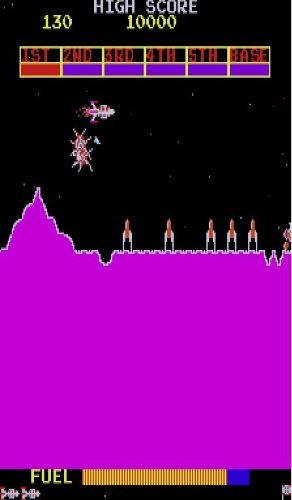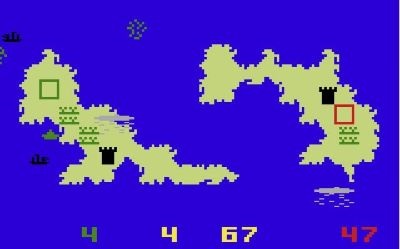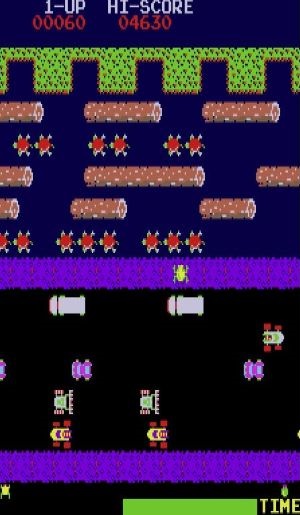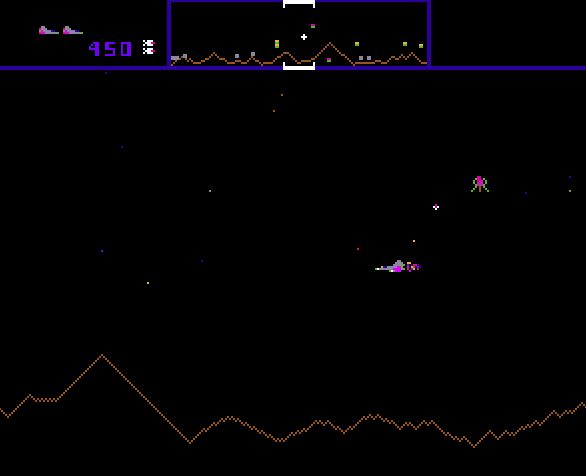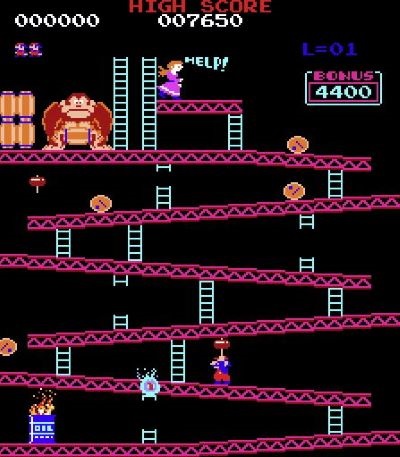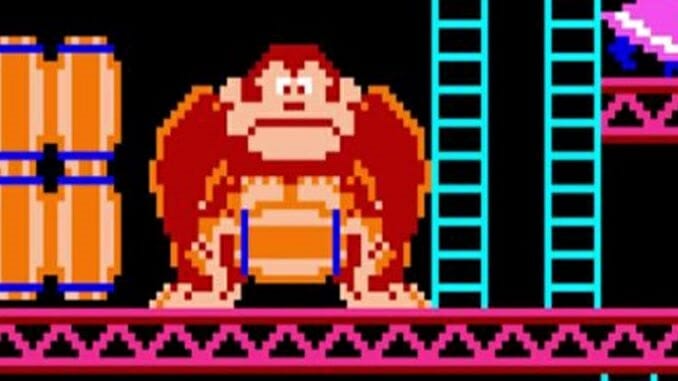
Videogames are still a relatively young medium, but not that young. The earliest computer games date back to the late ‘40s and early ‘50s, and the first home console launched almost 50 years ago. The teens who blew through countless quarters during the golden age of the arcade are all old enough to be grandparents at this point. Early classics like Pac-Man, Space Invaders, and Breakout are all in their 40s by now. A number of iconic games will join them in the big 4-0 Club this year, sailing right into middle age while still retaining the youthful CRT glow they had back in 1981. Not every game from 1981 was popular at the time or well-remembered today, and even some of the ones that are still celebrated all these decades later aren’t necessarily all that good, by the standards of either today or 40 years ago. Many of them do hold up, though, or have a historical importance that can’t be denied. Those are the games we’re talking about today—the ones that changed the course of games as a business and an artform. They get bonus points if they’re still actually fun to play today; as you’ll find out, our number one is a game that’s as thrilling and intoxicating in 2021 as it was in the early ‘80s.
Here are the best videogames of 1981.
10. Scramble
1981 was a key year in the development of the sidescrolling shooter, and Konami’s Scramble was a big part of that. In an era full of firsts, Scramble gets the credit for introducing both forced scrolling—i.e., the screen constantly scrolls at a fixed rate, which became a genre standard for shooters—and the concept of unique levels. Those are two pretty big developments, right there. One thing that sets it apart from most of the sidescrolling shoot-’em-ups that followed is the presence of a fuel meter. You don’t just have to avoid enemies, their projectiles, and various obstacles in the environment; you also have to make sure you keep your fuel supply flowing. Yes, you do that by shooting things. This is a shooter, after all. Scramble isn’t just interesting because of its historical significance; it’s a fun, hard, well-designed shooter that benefits from not being as well-known as most of the other games on this list. It might not be as nostalgic for most as Frogger or Defender, but it can feel fresher today than those almost ubiquitous classics.
9. Utopia
A quick note about Utopia before we actually discuss the game: its release date seems to be in question. Most references to it on the internet say that it was originally released in 1981; you can find multiple online sources that state that, stretching back to the earliest days of the web. But Blue Sky Rangers, a website devoted to the history of the Intellivision, lists it with a 1982 release date. That’s the date that you’ll currently find on Wikipedia’s entry for the game. We don’t doubt Blue Sky Rangers; anybody that serious about the history of the Intellivsion is unlikely to get something like that wrong, so Utopia probably did come out in 1982. Still, the 1981 date is mentioned far more often than the 1982 one, and, um, we had already drawn up this list with Utopia on it and don’t want to find a game to swap it out with at the last minute, so we’re sticking with it. Even if Utopia was released in 1982 it was probably being developed in 1981, so hell, it counts.
Anyway. Utopia! Don Daglow’s game was an extreme outlier for the time in which it was made. In an era ruled by space shooters, puzzle games, and Dungeons & Dragons-inspired RPGs, Utopia laid the groundwork for city-building and real-time strategy games. You oversee one of two rival islands, using resources to farm, erect buildings, build a fleet, and keep your citizens happy, while also trying to undermine the growth and progress of your opponent. Randomized weather events or pirate incursions slow down your progress, and if your citizens aren’t happy you’ll have to deal with rebel activity. You can even fund rebels within the rival island. It was one of the first games to explore concepts that later came to define series like Civilization, SimCity, and the whole RTS genre. (For more on Utopia and the history of the RTS, go read this fantastic article by Richard Moss over at Ars Technica.)
7./8. Ultima / Wizardy: Proving Grounds of the Mad Overlord (Tie)

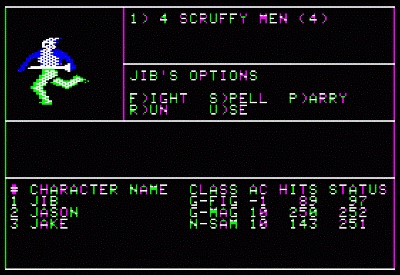
In the ‘80s two series dominated the RPG scene on computers, and the first game for each came out in 1981. On one side you had Sir-Tech’s dungeon crawler Wizardry, known for first-person mazes and brutal difficulty. On the other stood Richard Garriott’s Ultima, which used a similar first-person perspective for its dungeons, but boasted a top-down perspective for the significant amount of time the player spent aboveground. Your favorite would come down to preference—do you prefer the more focused grind of Wizardry, where the goal is to hack and spellcast your way through 10 levels of an increasingly treacherous dungeon? Or are you partial to Ultima’s more expansive story and setting? Both are clearly indebted to Dungeons & Dragons, with stats, races, character classes, magic, and gear all operating similarly to the tabletop giant. Wizardry is the more difficult of the two, whereas Ultima introduces a series and world that Garriott repeatedly expanded on over the next three decades. Ultima is probably better remembered today, but Wizardry was a bigger hit at the time. Taken together, they represent the state-of-the-art of RPGs in 1981, and hint at the epic horizons the genre would reach in the years to come.
6. Castle Wolfenstein
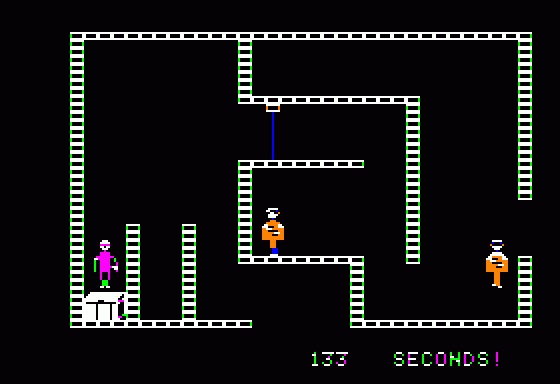
Silas Warner’s Apple II classic didn’t just birth the still-running Wolfenstein series; it basically created the stealth-shooter, laying the rudimentary groundwork for future series like Metal Gear, Hitman, and Splinter Cell. The procedurally-generated action-puzzler tasked you with escaping from a Nazi prison with dozens of rooms; you could kill the guards and stormtroopers that tried to stop you, if you had the ammunition, or you could try to avoid detection. It was a unique design innovation at the time, which in turn helped Castle Wolfenstein become an early blockbuster in the world of computer ga
5. Frogger
1981 was a pivotal year in expanding the aesthetic and thematic scope of videogames. Spurred on by the enormous success of 1980’s Pac-Man, developers realized they could branch out from the space, war, and fantasy themes that largely dominated the early years of gaming. Frogger turned the low-stakes idea of safely guiding frogs home into one of the biggest hits in videogame history, in part because its theme and gameplay weren’t focused solidly on the young male demographic. Frogger appealed to all ages and genders, and had the kind of accessible but challenging action that made for big business back in the quarter days. It’s a puzzler akin to Pac-Man or Q*Bert in spirit but with very different gameplay, with the goal not being to kill or harm anything, but to avoid cars and make it across a quickly moving river while returning to the safety of home. Frogger was an important part of helping games become mainstream entertainment in the early ‘80s, and proof designers could make money with games that weren’t just repetitive alien shoot-outs.
4. Defender
Eugene Jarvis jumped from pinball to videogames with Defender, delivering one of the true foundational masterpieces of the form in his very first go. It wasn’t technically the first side-scrolling shooter, but along with fellow Class of ‘81 game Scramble it popularized the concept. It did one better than that, though; instead of flying straight to the right, as seen in almost every other side-scrolling shooter ever made, players could fly in either direction, with the screen freely scrolling to either the right or left as they guided their ship. You also have to manually control your ship’s thrust, which adds a significant amount of difficulty to the basic act of movement. The title comes from yet another gameplay wrinkle; instead of just shooting enemy ships, you have to defend the people living on the surface of your planet. Enemies try to abduct them, and if they get taken to the top of the screen they’re mutated into a new type of enemy; if you shoot a ship as it’s abducting a citizen, you then have to catch that person as they fall and place them safely on the ground, or else they’ll splat all over the city below. So you’re not just trying to keep yourself alive; you have to worry about all these randos milling about on the bottom of the screen, too. Defender is a brilliant game that represented a massive leap forward in game design at the time; it would be higher on this list if it was, uh, more enjoyable to play. Obviously we love Defender here, and recognize its extreme importance, but it’s so unforgiving, and with so many moving parts, that we can’t in good conscience rank it higher than the next three games on our list.
3. Donkey Kong
Shigeru Miyamoto was already thinking outside the box in his first game. While most early arcade games put players in similar sci-fi scenarios, Donkey Kong took a page from a legendary movie that’s equal parts horror, adventure, and romance. There were no aliens, no soldiers, no guns of any kind, just an overalls-wearing laborer climbing rickety scaffolding to rescue his girl from a giant monkey. Mario wasn’t quite a plumber yet; he wasn’t even Mario, making this first appearance under the name Jumpman. Jumping was pretty much his only skill, although occasionally he could find a hammer that would let him smash the barrels that were constantly being thrown at him. Donkey Kong is a punishingly hard obstacle course built around one or two basic mechanics, relying on not just the timing and reflexes of the player, but also their ability to recognize and remember the patterns that tended to recur throughout the game. It didn’t feel like any other game at the time, showcasing the whimsy and inventiveness that would define Miyamoto’s work at Nintendo.
2. Galaga

Galaga is the rare sequel that so thoroughly outclassed the original, both in quality and popularity, that many today don’t even realize it is a sequel. Namco’s shooter hews closely to the look and feel of the previous year’s Galaxian, which took Space Invaders and added color and enemies that would fly towards your ship, but with a crucial gameplay difference: enemies can now capture your ship, which, when freed, links up to your next ship to form a double-wide spaceship that fires two bullets at a time. Power-ups were still rare in the genre pioneered by Space Invaders, and this unique approach to doubling your firepower gave Galaga a strong hook. It also introduced a bonus stage, which nicely breaks up the repetitiveness of Galaxian, and tracks your hit-and-miss percentage. Beyond all of that, Galaga is a masterclass in early ‘80s game design—complex and challenging, but with fundamentally simple rules and controls that are quickly and easily learned.
1. Tempest

Gaming is full of ridiculous and opaque genre names, and “tube shooter” might be my personal favorite. Is it a tube that shoots things? Is it a game where you shoot tubes—either firing bullets at tubes, or firing tubes as bullets? If you haven’t played one before, or aren’t well-versed in gaming jargon, you’d never be able to tell from the term itself.
Let’s clear that up: tube shooters are called that because you’re basically staring down a tube as you play them. Typically you control a ship or character on the outer edge of the tube, and shoot inward at enemies as they approach you through the tube. You’re shooting into a tube. You are tube shooting. It is a tube shooter. That is how these words work.
If you haven’t guessed yet, Tempest is a tube shooter. It’s not just a tube shooter—it’s the tube shooter, the one that pioneered the concept and introduced a genre that still has a strong cult following 40 years later. Tempest took a unique approach to shooting by having the enemies come from the center of the screen. Most shooters at that time were top-down like Space Invaders, meaning your ship was at the bottom of a single stationary screen and enemies were at the top, either moving horizontally or sometimes flying towards your ship. 1981 gave us both the side-scrolling shooter, pioneered by Defender and Scramble, and the tube shooter, with Tempest placing the player’s vehicle on the tube’s lip and asking them to skirt alongside that outer perimeter while firing at enemies that charged out from the center. It’s a fast-paced shooting gallery that quickly escalates into constant chaos, and an especially challenging game from an era when almost all games were brutally hard. Many games have followed in Tempest’s footsteps—including multiple sequels and remakes—but this is one of the rare examples of a genre that was basically perfected in its very first appearance. Tempest isnt just the first or most important tube shooter, but it is still the best, as transfixing and tauntingly playable today as it was in 1981.
Senior editor Garrett Martin writes about videogames, comedy, travel, theme parks, wrestling, and anything else that gets in his way. He’s also on Twitter @grmartin.
